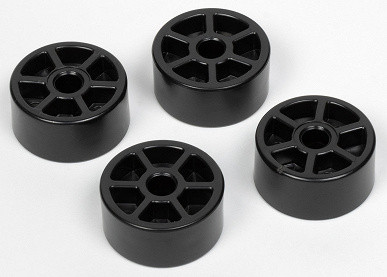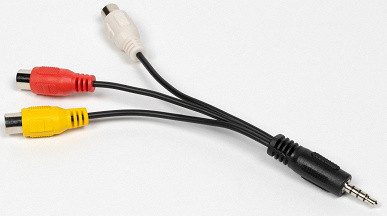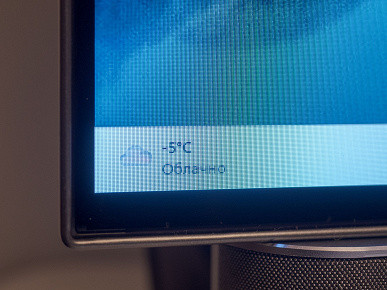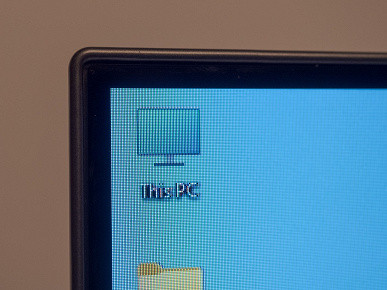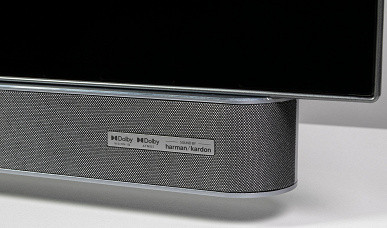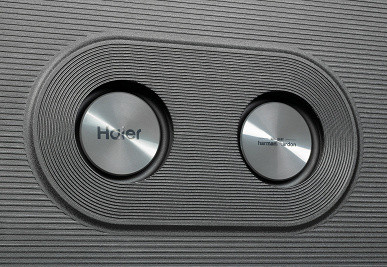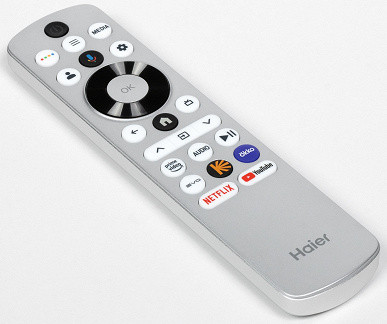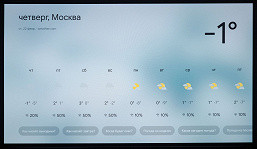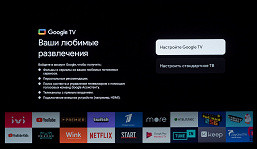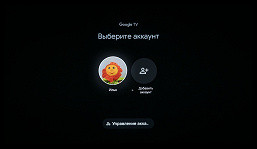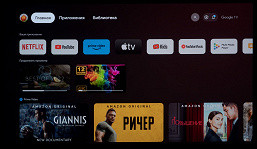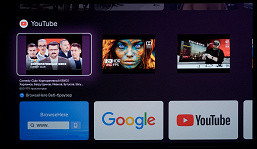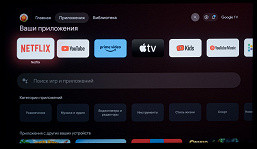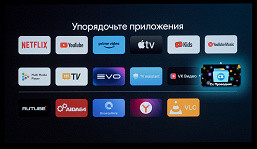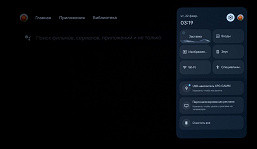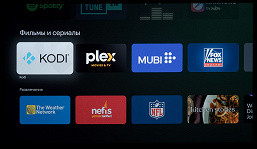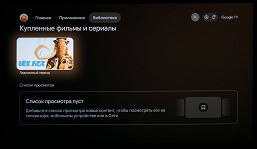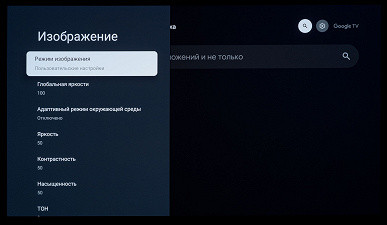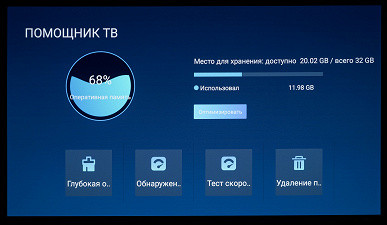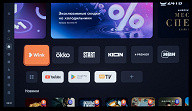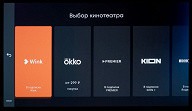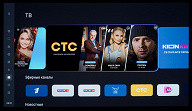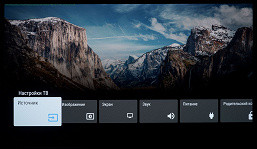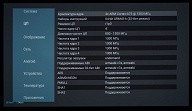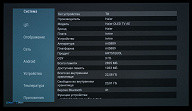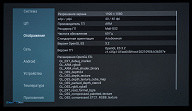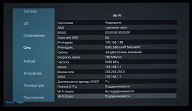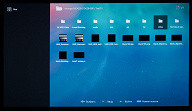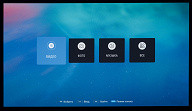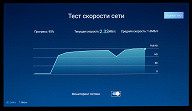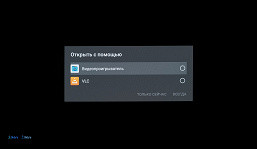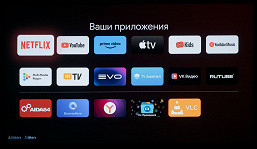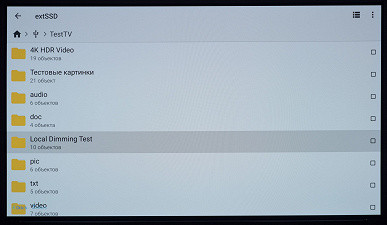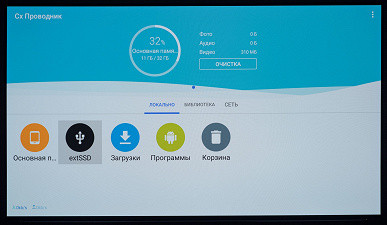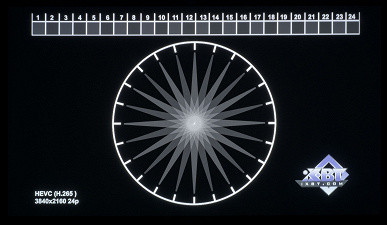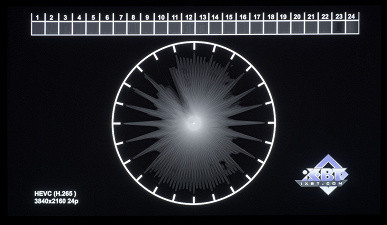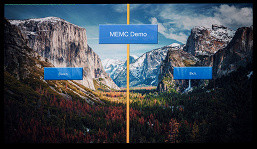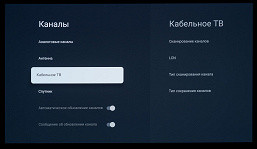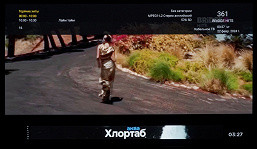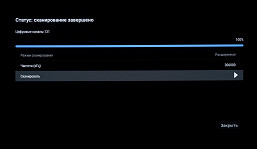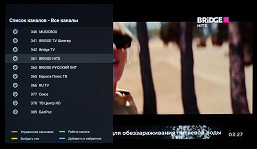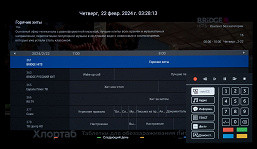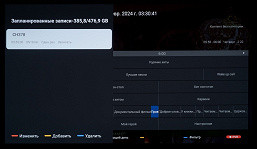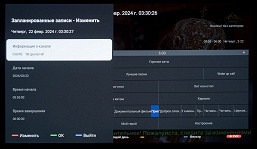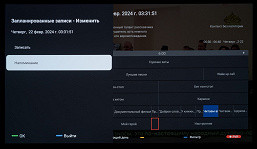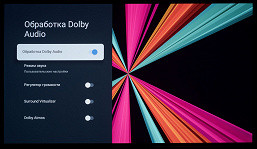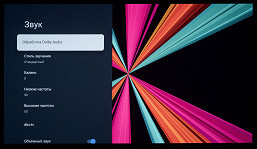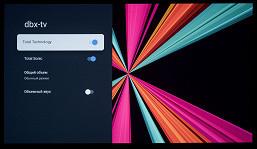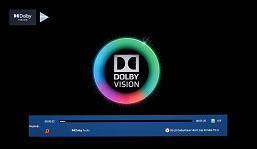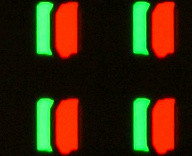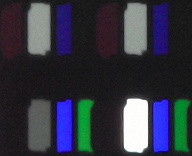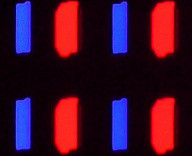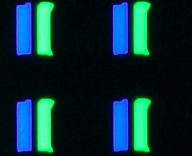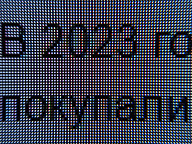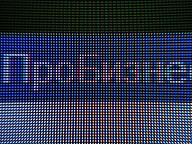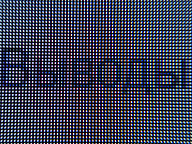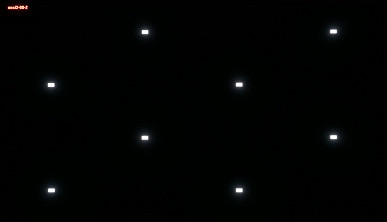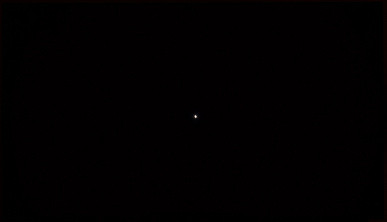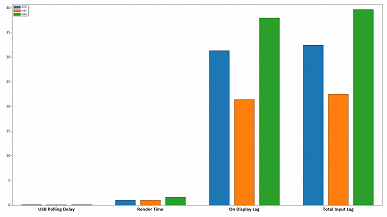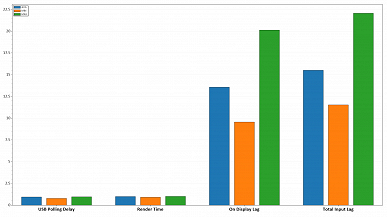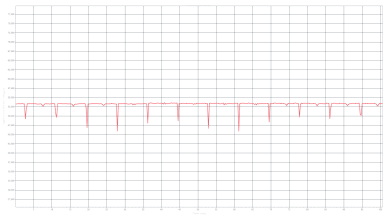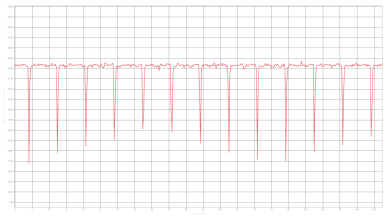Over the past 10-12 years, OLED TVs have become popular and have gained many fans due to their advantages over LCD screens: pixel brightness control, deep blacks and high-quality HDR playback. Brands such as LG, Sony and Philips dominated the market in Russia by offering TVs based on OLED panels. By 2024, the TV market in Russia had undergone significant changes: some major players left, Chinese companies became more active, and even Samsung, which was initially skeptical about OLED, introduced its QD-OLED variants.
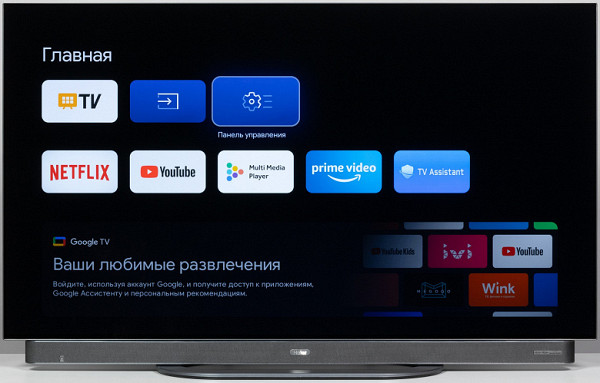
In the context of price wars and changes in the market, many consumers are paying attention to less well-known manufacturers, based on the desire to purchase a TV with a guarantee. The Chinese company Haier was able to take a leading position in the Russian TV market thanks to its efforts. One of their top products is the 55-inch Haier 55 OLED S9 Ultra TV, powered by Google TV, with a high-performance platform, a screen with a refresh rate of 120 Hz and a high-quality 2.1 class speaker system that supports modern audio processing technologies.
Specifications, delivery set
| Screen | |
|---|---|
| Screen type | W-OLED — a matrix of organic light-emitting diodes |
| Diagonal | 55 inches / 140 cm |
| Permission | 3840x2160 pixels (16:9) |
| Panel color depth | 10 bits (12 bit emulation using FRC) |
| Brightness | 1000 cd/m² (HDR peak) |
| Contrast | 185000:1 (typical) |
| Viewing Angles | 178° (horizontal) and 178° (vertical) |
| Response time | 0.1 ms GtG |
| Interfaces |
|
| Other characteristics | |
| Acoustic system | stereo speakers 2×12 W + 20 W subwoofer |
| Peculiarities |
|
| Dimensions (W×H×D) | 1226×768×295 mm with stand 1226×749×59 mm without stand |
| Weight | 23.7 kg with stand 18.7 kg without stand |
| Power consumption | 230 W (maximum), 0.5 W standby |
| Supply voltage | 100—240 V, 50/60 Hz |
| Delivery set (need to check before purchasing!) |
|
Packaging and appearance
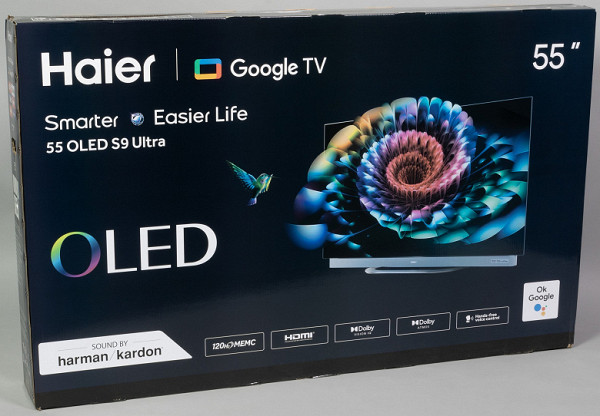
The TV is packaged in a brightly decorated corrugated cardboard box with notes on its main technical characteristics and a photograph of the model on both sides. For ease of carrying, the box has side slotted handles.
The scope of delivery is expanded with the help of an AV adapter from RCA to 3.5 mm and four wall spacers, which can be installed if necessary when wall mounting the TV.
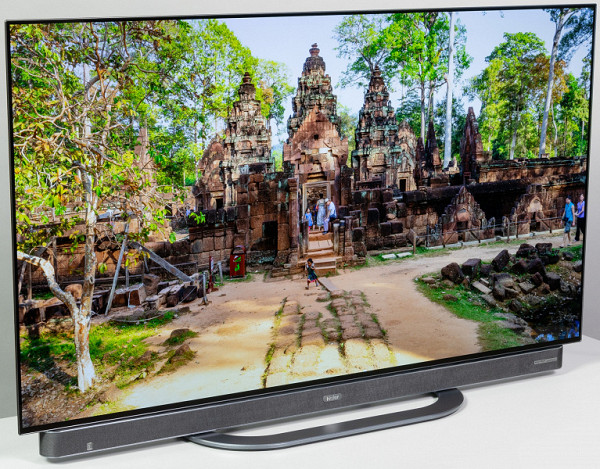
The design of the TV is presented in a strict, “frameless” style, based on black or a color close to it. The screen has no visible frame, no noticeable protruding elements, with a narrow frame made of aluminum profile, painted in dark gray. The OLED panel body itself looks very thin, but this is accompanied by relatively low rigidity. As a result, when manipulating the TV, it is recommended to take it not by the corners, but closer to the middle, in order to avoid deformation of the case or damage to the matrix. This feature is typical for most OLED TVs.
The outer surface of the screen has a mirror-smooth texture and relatively high resistance to damage. When delivered from the factory, the screen is additionally protected by shipping film, which must be removed before use. Although there is an anti-glare filter, the anti-glare properties of the screen are not very pronounced due to its glossy surface, so you should avoid bright ambient lighting and direct sunlight on the screen.
The non-working margins of the screen for this diagonal are relatively narrow, typical for most OLED TVs with a diagonal of 55 inches: about 5-5.5 mm on the top and sides, 10 mm on the bottom, as well as 2.5 mm on the metal frame.
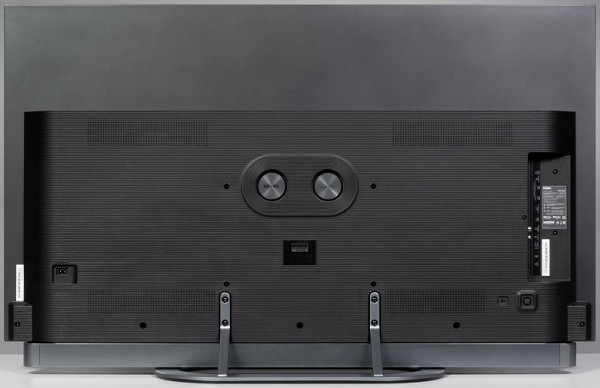
From the back, the TV looks neat and stylish. The top and edges of the back panel are made from thin sheet steel with a durable, dark matte finish. The back cover, which protrudes back and covers approximately 65-70% of the space, is made of high-quality matte plastic with a texture. The main ports and connectors for connections are located in one compartment.
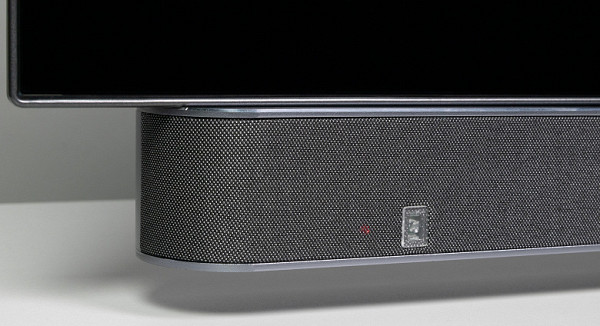
At the bottom of the screen there is a large acoustic unit, rigidly attached to the TV body. The panel is made of brushed aluminum and the front part is covered with fabric stretched over a mesh. On the left there is a light guide cover made of transparent plastic, behind which the IR receiver of the remote control, a light sensor and a status indicator covered with fabric are hidden.
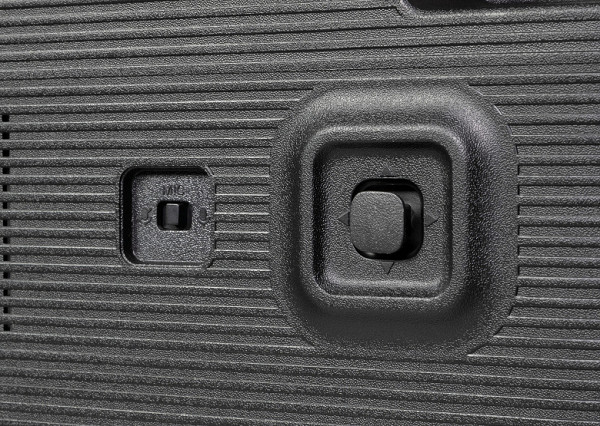
On the back of the TV is a physical switch for the built-in microphone, which is used for voice control and interaction with Google Assistant. There is also a five-way joystick with which you can turn the TV on and off, put it into standby mode (short press) or deep sleep mode (long press), switch the signal source and adjust the volume. In standby mode, the indicator glows red, but in operating mode it does not light up.
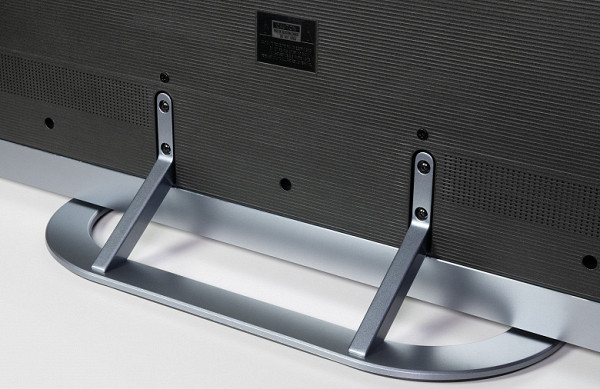
Haier's standard stand consists of two metal posts painted with gray powder paint with metallic particles, and a large oval base with a plastic top surface. For assembly, you must use the eight screws included in the package.
Using such a stand makes it easy to install the TV on even small shelves and tables. The design holds the heavy TV frame with a subtle rearward tilt without excessive vibration. In other words, the assembled structure has sufficient rigidity.
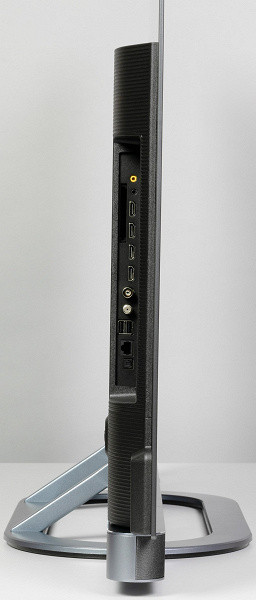
An alternative way to install a TV without using a standard stand is to mount it using VESA 300x200mm mounting holes.
In addition to the soundbar, which contains the main full-range speakers, the TV has two more speakers in the rear of the case, responsible for reproducing low frequencies. The acoustics were developed jointly with the famous company Harman/Kardon and support Dolby Atmos technologies and other sound enhancement systems. In addition, there are four ventilation grilles on the back of the TV designed solely to cool the internal components of the TV.
Switching and wireless connections
The table with characteristics at the beginning of the article gives an idea of the communication capabilities of the TV.
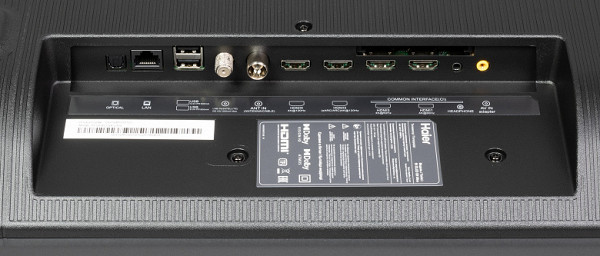
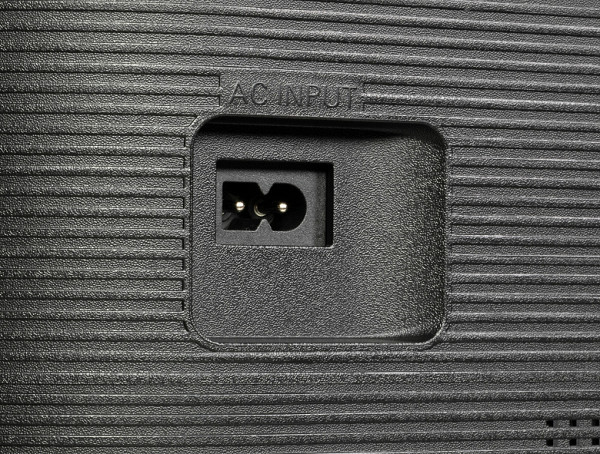
Most connectors are standard, full-size, freely placed on one side of the case. The power cable is removable, its length is 1.8 meters, and the power connector is located separately from the other interfaces.
Among the advantages of the TV, it is worth noting the presence of four HDMI inputs, according to the manufacturer, all of them are compatible with the HDMI 2.1 version, but only two of them support a 120 Hz refresh rate, while only one of these two supports eARC / ARC functions. There are also two USB 2.0 ports with a maximum current of up to 0.5 A, which ensures the operation of most simple flash drives and SSDs. Both ports can be used to connect peripherals such as keyboard, mouse or USB receivers, provided the power consumption is appropriate.
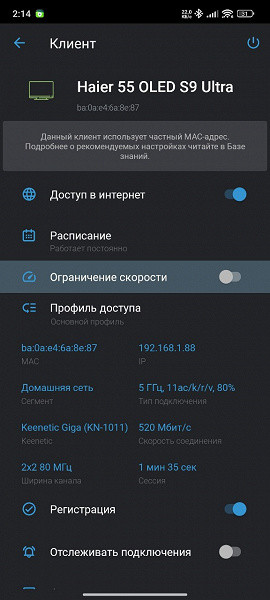
The RJ-45 connector for a wired network connection is conveniently located, but most users will prefer to use the built-in Wi-Fi 5 wireless adapter (802.11a/b/g/n/ac, 2.4 and 5 GHz).
When connected to a deployed 5 GHz network based on the Keenetic Giga router and the TV was located 5 meters away with an obstacle in the form of a monolithic wall, the Haier 55 OLED S9 Ultra showed a stable connection speed of 520 Mbit/s (connection standard — 11ac/k/r/v, 2×2 80 MHz), which sometimes exceeded this figure. This is a very good result. However, for unknown reasons, the TV often switched to the 2.4 GHz channel, which led to a sharp decrease in connection speed. Therefore, it is preferable to use two separate SSIDs for 2.4 and 5 GHz networks and force the Haier 55 OLED S9 Ultra to connect to the latter.
The TV supports HDMI control — the HDMI CEC function, which works perfectly with the Xiaomi Mi Box S set-top box and its standard remote control. It is also possible to use the reverse effect, when the TV remote controls the set-top box and turns it off in parallel with the TV.
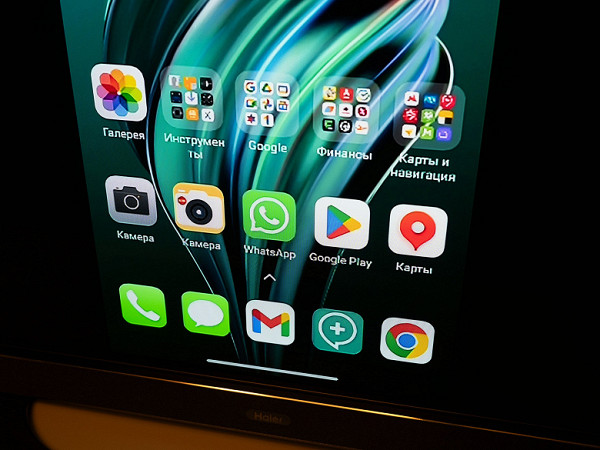
Using Miracast mode on your TV, you can share a copy of your mobile device's screen and audio over Wi-Fi. When using a fairly powerful device, such as the Poco F5, you can get satisfactory video output quality (score 3 minus), but with a frame rate limit of up to 30 and a noticeable delay.
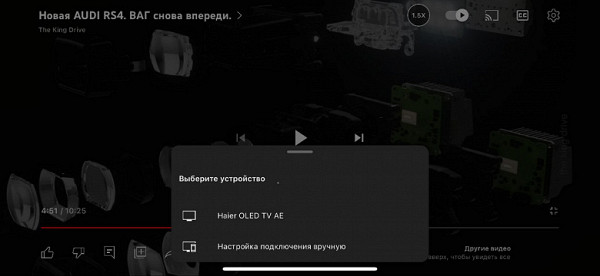
The TV supports Google Chromecast function without any problems in operation. There is also support for the more advanced Apple AirPlay 2 protocol. When using this feature and connecting to the iPhone 15 Pro Max, you will experience significant improvements in picture quality, reduced signal latency, and more stable transmission.
Remote control and other control systems
The Haier TV remote control is made of matte gray plastic with an aluminum frame, also painted gray. The buttons are mostly made of a rubber-like material, with the exception of the central [OK] button, which is made of hard silver plastic with a glossy black insert around it. The volume rocker and mute button are located on the right aluminum edge of the remote control, which is convenient.
The button labels are contrasting, the main buttons are quite large, as are the inscriptions on them. The remote control has buttons for quickly launching popular applications, and only two of them are not officially supported for users from the Russian Federation (Netflix and Amazon Prime Video).
The remote control is a hybrid one, which allows it to work via both IR and Bluetooth. To activate Bluetooth, you need to press a certain key combination on the remote control once for 5-6 seconds — instructions are provided when you initially set up the TV. The IR remote control works before pairing with the TV or when the TV is in standby or deep sleep mode. In other cases, commands are transmitted via Bluetooth.

Google's voice assistant is activated by pressing the black button with a colored microphone (you need to hold the button to enter a voice command), and can also be launched from the home page or by pressing the multimedia search button on the numeric keypad. The microphone is probably located in the TV case, so there is a hardware microphone switch on it (this can be turned off if there are concerns about “constant listening”). It also supports Far Field, which allows you to interact with the Google Assistant without pressing a key on the remote. This means that you can communicate with the assistant in the same way as on any Android smartphone. It is very comfortable!
The assistant can help you find content provided by various programs and answer questions, for example, about the current weather outside, both by visualizing and speaking the answer.
Some programs have the ability to use voice text input. There is also basic integration with the TV itself: you can use your voice to adjust the volume, turn the sound on/off, open a menu with settings, select the desired input and launch a program by its name (provided it is pronounced correctly, without unnecessary accent). You can also display the TV program guide and switch to a TV channel by its name.
If words or phrases are not recognized as commands, a search is performed and entertainment content, including YouTube videos, appears in the results, and sometimes also opens an app page in the Google Play store with a name matching the search query.
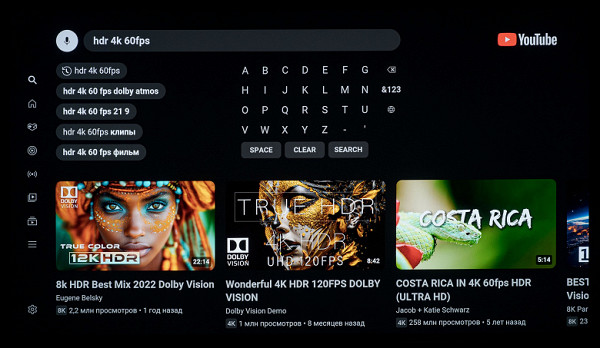
The remote control does not have a coordinate input function (gyroscopic mouse). However, this can be compensated for by connecting a keyboard and mouse to the TV — both wired and wireless models (with a separate external USB transmitter or Bluetooth-compatible).
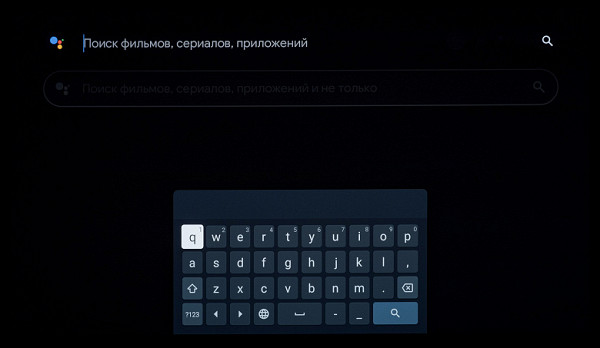
The remote supports scrolling with a wheel, and the right mouse button performs the undo/redo function. The delay in moving the mouse cursor relative to the movement of the mouse itself is negligible. For the connected keyboard, by default there is no hot switching of the key layout, however, you can install a third-party application to quickly change layouts and configure shortcut keys, including for the included remote control.
Separately, it is worth noting that controlling a Haier TV is also possible from a mobile device using applications that emulate the remote control for TVs running on the Google TV/Android TV platform. These applications are available from various sources on the Internet.
Android TV shell
The Haier 55 OLED S9 Ultra TV runs Google TV, which is based on Android version 11 (or Android R, known as Red Velvet) with the latest update from early summer 2023.
The initial setup of the system can be done by logging into your Google account directly from your mobile device, which saves a lot of time. The Google TV home screen, which is 95% or even 99% identical to Android TV, consists of several horizontal strips with tiles of favorite installed applications, favorites and recommended content from various programs, including channels. Labels on the left above the feeds indicate the contents of each feed.
At the top of the page there are button icons for entering text into the search bar, switching screen content between ribbons with application/content tiles or tiles of installed programs, as well as icons for displaying system messages and going to account settings. In addition, there is access to all the main settings, which are initially presented in a small side menu with oval block sections.
In the home page settings, the user is given the opportunity to make changes to the location of external blocks, activate/deactivate sections, disable advertising and add favorite applications to the quick access list.
The TV already has a sufficient number of applications installed from developers from the CIS, as well as some Western software that may not be so relevant in the Russian Federation.
Although there are not many applications officially available on Google Play for the Google TV/Android TV platform, this practically does not limit users, since the TV can work with many APK installers suitable for the software and hardware platform used. The main thing is that the hardware built into the TV has enough power for the desired application.
The built-in TV Assistant provides quick access to various functions, such as cleaning the system, diagnosing network connections and uninstalling applications. When you connect an external drive, the system automatically detects it and prompts you to go to the media manager. With this notification, you can access the new drive through the built-in Explorer of Multi Media Player, use it to record TV broadcasts through the PVR function and format it if necessary.
Navigation through the interface is comfortable, with nice animation. After all elements are fully loaded, the system works quite quickly and smoothly, especially if you do not overload it with repeated requests to various functions from the remote control and do not try to carry out many actions in a short period of time. However, even with advanced hardware, the Haier TV may experience slowdowns at times. In such cases, it is recommended to give the system time to process all commands or reboot the system, avoiding repeating similar actions. Additionally, partial delays in playback of 4K UHD 60p HDR videos may occur due to additional system load, such as starting menus, changing settings, or frequently pressing keys on the remote control.
I would like to highlight the Haier aggregator application called Evo TV, which greatly simplifies the process of searching for films, helps you select content and shows on which online platforms it can be found. After selecting content, the application navigates to the corresponding application (if installed on the TV) or offers to download and install it.
Evo TV has a modern interface, built on the basic principles of many online platforms for viewing entertainment content. The application works quickly, collects ratings from various popular resources, provides access to online TV and indicates the need to install individual applications, if necessary. There are various selections based on interests, the ability to search by actors, genres and ratings. All this is combined in one place, which greatly simplifies the search for the desired content through several services.
Basic system settings
The main set of picture and sound settings are presented in the familiar side menu format that is typical of all Android TVs.
Picture settings are extensive and accessible from a variety of places, including the settings menu on the home page or a context menu with tiles that can be called up while viewing TV channels or external video sources, including connected computers.
Picture settings are automatically applied to all applications and inputs, including the TV tuner, with the ability to be customized for each external source. There are also separate settings for the HDR signal. However, sometimes there are problems with saving settings, especially when changing modes and then returning to previous settings. We hope that this issue will be fixed in future TV firmware updates.
All other settings have been moved to a separate screen due to the use of the Google TV shell. This screen overlaps the content being played and has a block structure, with navigation to additional subsections as you slide to the right.
The Russified interface is installed by default and is presented with a fairly high-quality translation. However, there are no prompts for operating parameters, which are usually present on devices with other popular operating systems.
The system offers an extensive set of settings related to wireless connection. It is possible to set up a VPN connection directly from the operating system, without the need to use third-party applications. The user has the ability to block access to various software and generally control all processes, as on any device with the Android operating system.
The contents of the context menu may vary depending on the image source, the content being played, its format, and the available HDR metadata. In some cases, some settings related to color reproduction and image quality may not be available to the user. Also, activating some functions may limit the operation of others; they become inaccessible (blocked). However, the Google TV/Android TV platform tends to have fewer of these restrictions than other platforms.
Please note that when connecting to a computer or laptop, it is recommended to use HDMI 3/4 ports and switch the EDID version in the interface settings on the TV to EDID 2.1. It is also important to check the correctness of the settings in the video card driver interface, make sure that signal compression is not activated, and the full operating range is configured (0-255).
Testing
Hardware platform and multimedia content playback capabilities
After installing the AIDA64 information application via the downloaded APK file, we gained access to information on the hardware of the TV in question:
The model is equipped with an advanced hardware platform, including 3 GB of RAM, Mali G52 graphics core and a quad-core processor based on Cortex-A73 cores with a maximum frequency of 1.3 GHz. 24 GB of onboard memory is available, of which about 20 GB is available to the user. The operating system shell and installed applications are displayed in a resolution of 1920x1080 pixels.
Light sleep mode is activated by briefly pressing the power button. The TV wakes up from this mode in 2-3 seconds, but additional time is required to activate the wireless module and update the graphic elements of the shell.
Long pressing the power button or interrupting the power supply puts the TV into deep sleep mode. When you turn on from this state, the system starts again, which takes longer — about a minute until all elements of the main screen are fully loaded.
The TV easily supports USB drives with FAT32, exFAT and NTFS file systems, as well as Cyrillic names of files and folders. The player detects all files in folders, even if there are many of them. The use of additional utilities is not required, which simplifies interaction with TV.
Built-in applications are limited in functionality and usability, especially the standard Explorer. Users may install and prefer to use third-party programs. For example, Vimu Player and VLC for Android applications can be selected for playing video files, and for accessing the file system, network resources, etc. — Cx Conductor.
Our media playback testing was limited to a handful of files played primarily from external USB drives, such as a 64GB USB 3.2 Gen1 flash drive and a 512GB SSD also connected via USB 3.2 Gen1. A DLNA server was also used as a source of multimedia content, deployed using a Keenetic Giga wireless router (KN-1011) with firmware version 4.07 and a connected high-speed solid-state drive via a USB 3.0 port.
All third-party programs, as well as the operating system itself, display static images in a resolution of 1920x1080, which can be seen visually and confirmed by data from AIDA64. However, the built-in player and third-party applications for playing multimedia content are capable of outputting video in true 3840x2160 resolution using hardware decoding. Additionally, some video streaming apps such as YouTube support 4K UHD video playback.
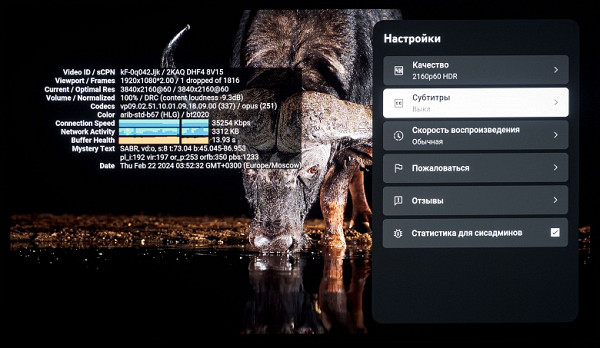
Testing the playback of audio and video files using the built-in player does not make much sense, since there is always a third-party program that will cope with this task better and more convenient for the user.
For subsequent testing of video file playback, VLC and Vimu players were mainly used. Most modern high-definition files played back without problems, including H.265 variants at 60 frames per second, using hardware decoding. In rare cases, when there was additional load on the system, such as when working in the settings menu, frame drops were observed, especially on 4K UHD videos with HDR.
The TV supports playback of HDR video files (HDR10, Dolby Vision and HLG) using various containers (MP4, TS, WebM and MKV) and codecs (AV1, VP9 and H.265). With 10-bit files, tones are rendered smoother than with 8-bit files, which is visually noticeable, although the visual quality is not always significantly different.
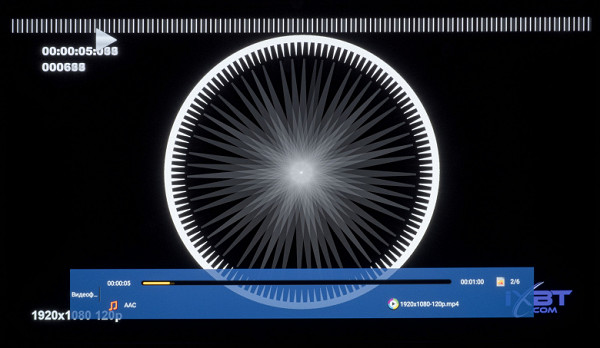
During testing, it turned out that when playing video files, the TV automatically adjusts the screen refresh rate to the frame rate in the video file. However, this only occurs at 50 and 60 frames per second, and for 24 frames per second files, a 2:3 frame duration is used. Video files at 120 frames per second are played back, but output at 60 frames per second, which is a built-in limitation of the system. When using output from a PC, no such restrictions were found.
The Haier model has the MEMC function. The user has access to basic settings for this function, offering three options for impact. It is also possible to activate a special demo mode, which clearly demonstrates the performance of MEMC. In this mode, the screen is divided into two parts: on one side the MEMC is activated, and on the other — not. This allows the user to clearly evaluate the effect of this function when viewing any content.
The maximum bitrate of video files, at which no artifacts were observed and the video was not interrupted during playback from USB drives and via Wi-Fi (using a network in the 5 GHz range, 11ax/k connection, 2x2 80 MHz), was 160-180 Mbit /s, depending on the codec used (H.264/H.265). Over a wired Ethernet network, this figure was 90 Mbit/s. All test videos were with a resolution of the 4K UHD standard (3840×2160), which corresponds to the capabilities of the matrix installed in the TV.
It was also confirmed that the TV's built-in player is capable of playing raster graphics files in JPEG, GIF, PNG and BMP formats, including slideshows.
TV tuner and PVR
This model, in addition to the satellite tuner, is equipped with a tuner that receives analog and digital signals from broadcast and cable broadcasts.
It's important to note that the TV doesn't have any advanced features to improve picture quality beyond basic settings like noise reduction. As a result, the image of low-definition (SD) channels looks extremely unsatisfactory. For the best visual experience, it is recommended to select channels with HD resolution or higher.
After correct basic setup, including choosing an operator to connect to, a complete search for programs takes no more than 20 seconds. After this, the TV is ready to watch TV programs.
It comes with basic Electronic Program Guide (EPG) support, allowing you to view current and upcoming broadcasts on various channels, as well as read program summaries. This information can be displayed on a third of the screen for ease of viewing.
Quick access to TV programs is possible through a dedicated button on the remote control or through a special section in the OS shell. All available cable channels, including analogue and digital, are presented in a separate list without colored icons. It is also possible to filter channels by their type and availability.
Haier TV is also equipped with the function of recording TV programs using a scheduler — PVR, which also supports the TimeShift function. Setting up this feature can be a little tricky, but once done it works flawlessly. The system quickly detects the connected hard drive, suggests using it for recording (especially if it uses the NTFS file system) and creates a special folder for saving recordings.
Acoustic system
The TV's built-in speaker system is built according to a 2.1 scheme — a classic stereo pair and separately dedicated low-frequency speakers (subwoofer zone at the back of the TV body).
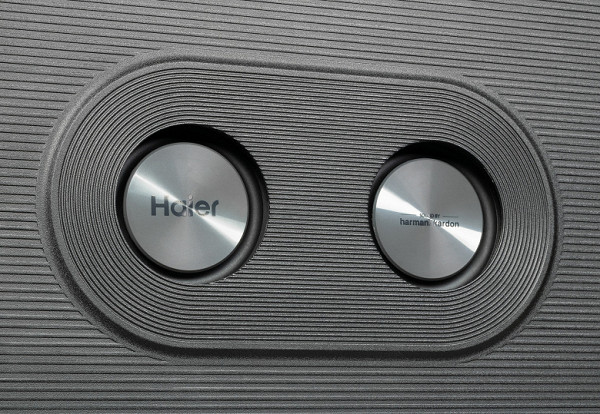
The sound settings menu is available in any program and anywhere in the system.
The Sound section of the operating system provides various options for customizing your audio. This includes preset equalizer modes available in the Sound Mode and Sound Style sections, as well as the ability to manually adjust balance, bass and treble correction. There is also a Surround Sound feature that makes the sound more spacious and provides more balanced bass. Dolby Audio and Dolby Atmos technologies are available for audio processing. There is also an automatic volume control function to equalize the audio signal level of different sources, digital output selection and dbx-tv support with additional settings.
Bluetooth is available to connect additional speaker systems, such as sound bars, and it is also possible to connect back and transmit signals from mobile devices to the TV speaker system. In addition, it is possible to connect wired speakers via various interface connectors, including HDMI (eARC/ARC), S/PDIF digital audio output and 3.5 mm headphone audio output.
The maximum volume of the TV's built-in speaker system corresponds to its diagonal and provides a sufficient sound level for rooms up to 30-40 square meters. However, it is worth remembering your neighbors and not increasing the volume above half.
The sound quality of the built-in speaker system is distinguished by a clear stereo effect with clearly defined highs, mids and lows. The built-in subwoofer works efficiently, despite the small thickness of the TV body. Various virtualization systems such as Dolby Audio and Dolby Atmos make the sound more spacious, and customization allows you to customize the sound to your liking.
The parasitic resonances of the cabinet practically do not appear at maximum volume thanks to the additional foam layer between the speaker cone and the rear plastic cover of the cabinet. In general, the quality of the installed speakers in this price category can be considered very decent, and many owners of the Haier 55 OLED S9 Ultra TV can do without additional speaker systems.
Work with video sources, HDR support
When connected to a computer via the HDMI ports, it is possible to output images at a resolution of 3840 by 2160 pixels at up to 120 Hz only when using HDMI ports 3 and 4. HDMI ports 1 and 2 are limited to 60 Hz, even when “PC Mode” is activated. which at 120 Hz may result in degraded image quality, including edge defects and other artifacts.
With this connection, the TV automatically adjusts the screen refresh rate to 50, 60 and 120 Hz. For 24 frames per second signals, frames are output in 2:3 increments.
The video noise reduction function works effectively without causing noticeable visual artifacts during dynamic images.
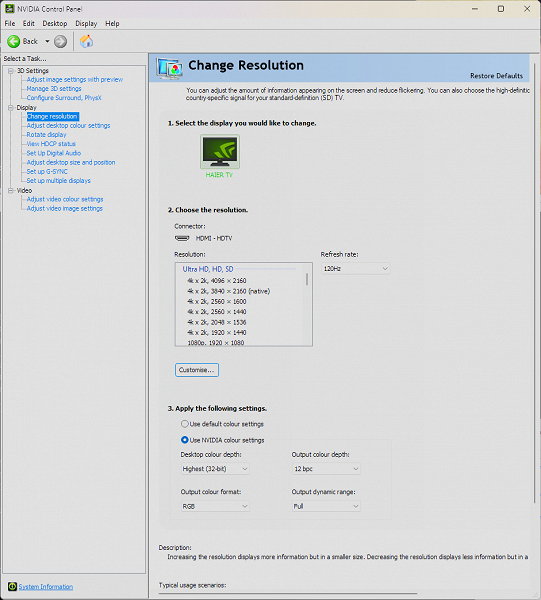
12 bit in 120 Hz mode, PC connection
When using Windows 11, HDR output to this TV is possible, provided you select the appropriate options in the display settings. At 4K UHD resolution at 120Hz, up to 12-bit per color (user selectable) output is supported, with no color compression and full operating range (0-255). However, to activate these features, the user must manually configure the EDID version of the TV's HDMI ports to 2.1 in the appropriate settings. By default, if EDID is set to Auto, restrictions may be applied.
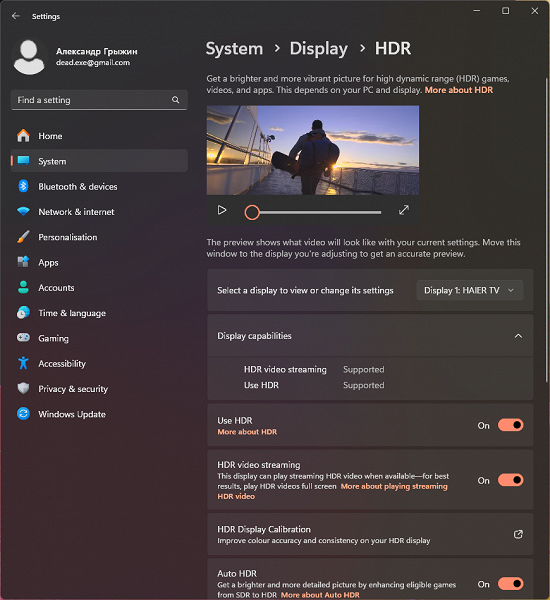
When playing back test videos with 10-bit color and smooth gradients, the noticeability of transitions between shades was noticeably reduced compared to simple 8-bit output without HDR. Colors in HDR content become more saturated, which is the expected result. However, setting the output to 12-bit does not significantly improve the quality of the gradients.
Thanks to the use of an OLED matrix, the TV provides high-quality playback of HDR content with pixel-by-pixel brightness control and high performance when outputting white to a small area of the screen. Additional figures and assessments of color rendering quality and basic operating parameters can be found in the corresponding section.
It's also worth noting that in HDR mode the maximum brightness is significantly higher than in SDR mode. However, in SDR mode, you can notice the rather aggressive effect of the Automatic Brightness Limiting (ABL) function, aimed at saving energy and increasing the life of OLEDs. For example, when using the light color scheme of the Windows operating system and increasing the size of the standard Explorer, we saw a more than twofold drop in brightness, regardless of the level of the Global Brightness setting.
The TV perfectly supports all major HDR standards. In the examples above, we used Dolby Vision (confirmed by the notification in the top left corner of the screen) and HDR10/HLG videos, which have different display modes.
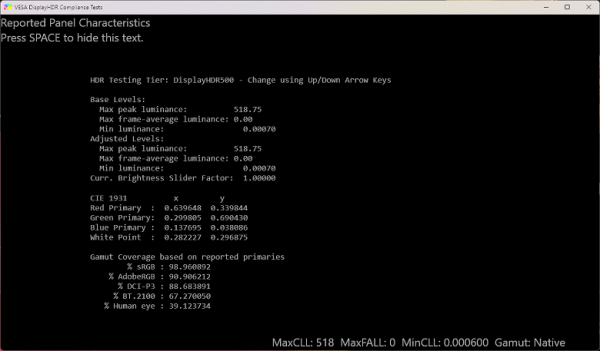
According to the data from the “Display Information” section and a special mark in the information block of the VESA DisplayHDR Test utility, it becomes clear that the TV fully complies with its declared characteristics. However, despite the 1000 nits declared by the manufacturer at peak HDR, the utility displays a figure of 518-519 nits. However, during testing it became clear that the Haier TV is capable of more.
Microphotographs of the matrix
This screen uses a W-OLED type matrix — an active matrix based on organic light-emitting diodes.
A full-gamut image is created using subpixels of four colors: red ®, green (G), blue (B) in equal proportions, and an additional white (W) for maximum brightness.
Many potential buyers of monitors and TVs with OLED matrices are afraid of the burn-in effect — an irreversible residual image. However, in practice, if there is a variety of content without static elements, burn-in of OLED matrices does not occur, especially in the case of modern TVs based on the latest technologies.
This is also supported by various features that prevent burn-in, such as pixel shifting, automatic brightening of static images (ABL), activation of dynamic screensavers after displaying static content for a long time, and many others. Some of these features may be disabled, for example when using the TV as a PC monitor, but it is recommended to play it safe and leave them enabled.
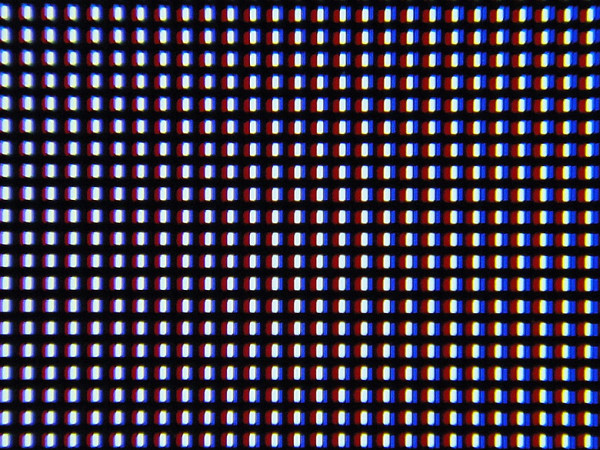
Upon closer examination of the screen surface, barely noticeable microdefects were discovered, randomly located across the entire surface. These defects play a role in the Haier TV's anti-glare properties, which is typical of most modern OLED screens.
Thanks to this feature, the so-called crystalline effect is practically absent, and the screen is visually striking with a contrasting and rich picture. The image is sharp enough, and there are no problems with the output of fine lines and text fields. Although the non-standard pixel structure can lead to defects when drawing small elements such as text, when using a 55-inch screen at a distance of more than two meters, this is hardly noticeable and has little effect on the overall perception.
Uniformity across the screen field
Brightness measurements were taken at 35 points on the screen at intervals of 1/6 of the screen width and height. In this case, the screen boundaries were not taken into account. The settings were set to have a white field brightness of 86 nits in the center of the screen.

The white background shows the characteristic unevenness inherent in many large TVs, including models with OLED screens. Of course, OLEDs may have slight differences in performance, but scenarios that actively reduce power consumption and heat dissipation are also possible.
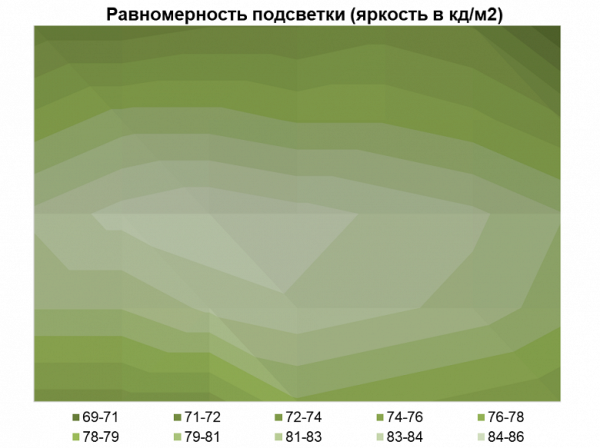
The average brightness deviation from the central point was 7.4%, and the maximum reached the level of 18.8%. The result for a 55-inch screen is very good. There can be no complaints about such results.
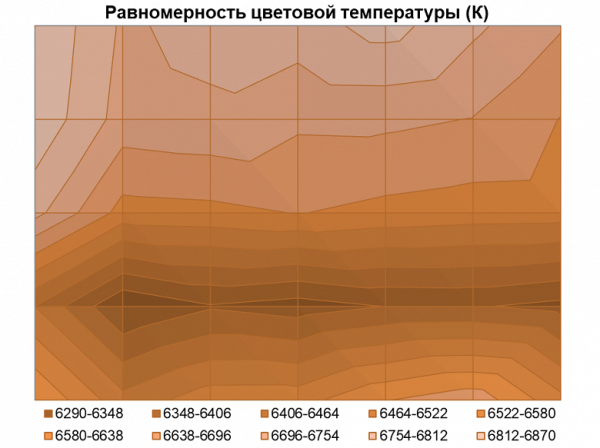
Good uniformity of color temperature is observed: the average deviation from the center point was only 1.9%, and the maximum was 5.3%. The color temperature variation is approximately 600 K, and visually it decreases from top to bottom.
When moving to darker gray shades that fill the entire TV screen, only subtle high-frequency noise is noticeable, known as the dirty screen effect, which is typical of most OLED screens.
When outputting a black field, all pixels are turned off, creating a «screen off» effect, which is the main advantage of OLED. There is a complete absence of defects in the corners, Glow effect and other defects.
Response speed, output latency and PWM modulation
Black-white-black (BtW-WtB) response time is 1 ms (0.7 ms on + 0.3 ms off). Transitions between semitones (GtG) occur on average in 0.63 ms.
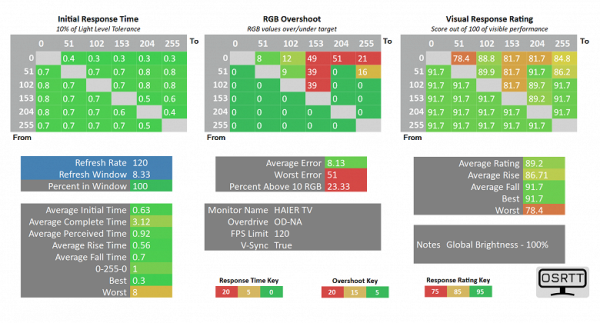
Response time is extremely fast due to instantaneous changes in pixel state. On some transitions artifacts may be noticed at an average level, but thanks to the fantastic response speed of the matrix, the end user will never notice them. This speed is sufficient even for very dynamic games, as well as for other types of tasks. It is important to note that the actual response time of a TV on some transitions may be even faster due to hardware limitations of the OSRTT instrument used, which could theoretically reduce the accuracy of ultra-fast response time measurements.
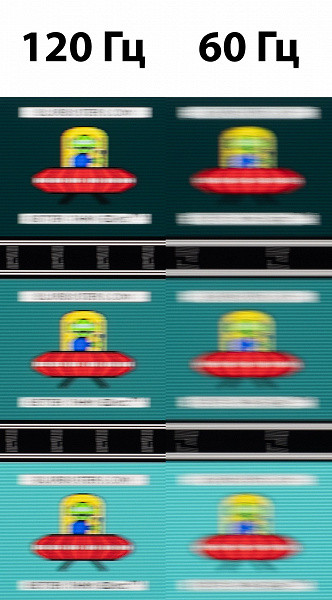
To illustrate the practical impact of sensor speed and possible overclocking artifacts, the above image is taken using a moving camera. Such images demonstrate what a person sees when they follow a moving object on a screen. It is noticeable that under the same conditions, image clarity increases significantly with increasing refresh rate.
Ayrıca video arabellek sayfalarının değiştirilmesinden görüntü ekranda görünene kadar genel çıkış gecikmesini de ölçtük. HDMI ve 60 Hz'de 3840x2160 piksel çözünürlük sinyali kullanıldığında, yaklaşık 32 ms'lik bir gecikme tespit edildi (ALLM etkinken). Bu gecikme, TV'yi PC çalışması için monitör olarak kullanırken fark edilmeyebilir, ancak yüksek dinamik oyunlar için aşırı görünebilir. Bu nedenle TV'nin 120 Hz moduna geçirilmesi tavsiye edilir. Aynı zamanda Nvidia G-Sync Uyumlu aktif uyarlamalı senkronizasyon sistemi kullanıldığında bile çıkış gecikmesi 13,5 ms'ye düşürülüyor.
There is no noticeable flicker at all brightness levels, as confirmed by the stroboscopic effect test. Even when recording brightness versus time at different brightness levels, brightness modulation with a very high fill factor was detected, which explains the absence of flicker.
Additionally, screenshots of the white field measurement results at global brightness of 0 and 100% obtained using the OSRTT device are provided. These data confirm the absence of full-fledged pulse width modulation (PWM), and also indicate the presence of only acceptable ripples for OLED, which are safe for the consumer’s eyesight even when watching TV for a long time.
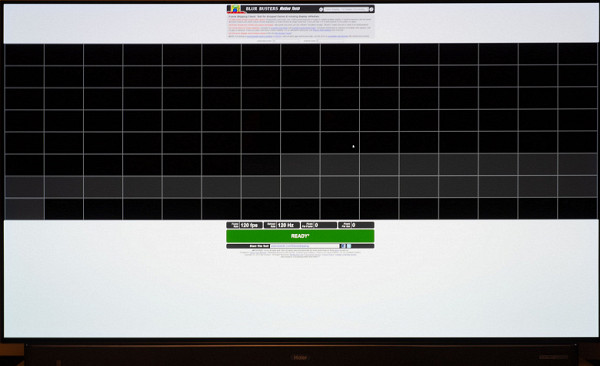
When the vertical scan frequency was set to 120 Hz, no frame drops were detected on the Haier TV — tested with a special Blur Busters test (TestUFO).
conclusions
The product in question, the Haier S9 Ultra 55-inch OLED TV, represents the top of the line for the brand and satisfies the high demands of consumers looking for cutting-edge TV solutions. The device is equipped with a high-quality acoustic system, made in the form of an external sound panel with the addition of 20 W low-frequency speakers. It supports all the necessary audio technologies, allowing the user to do without additional audio systems.
The TV is equipped with a W-OLED panel with high performance: wide color gamut (almost 97% DCI-P3), high peak brightness (almost 900 nits in peak HDR at 2% white fill), infinitely deep blacks and high response speed. It is capable of running at a maximum refresh rate of 120Hz for smooth images and has low output latency. Adaptive sync (including Nvidia G-Sync Compatible) and ALLM technology are also supported.
An important aspect is the presence of powerful hardware, the Android 11 operating system with the Google TV shell and support for all major wireless data transfer protocols (Chromecast, Miracast, Apple AirPlay 2). Together with additional tuning, this allows the Haier S9 Ultra TV to demonstrate high quality color reproduction and provide color accuracy on par with competitors.
Pros:
1. Google TV shell based on Android 11 with extensive customization options.
2. Support for HDR content (HDR10, Dolby Vision, HLG).
3. Excellent image quality, especially in HDR modes.
4. Wide color gamut and pixel-by-pixel brightness control thanks to OLED.
5. Built-in 2.1 speaker system (Harman/Kardon) with Dolby Atmos support.
6. Google voice assistant with voice control without a remote control and a hardware microphone switch on the TV body.
7. Supports Google Chromecast, Miracast and Apple AirPlay 2 for wireless data transfer.
8. Support MEMC and ALLM functions.
9. Low output latency, especially at 120Hz refresh rate.
10. Official delivery and 3-year manufacturer's warranty.
Minuses:
1. Artifacts may occur when using the MEMC frame insertion system.
2. High price compared to a similar device Haier OLED H55S9UG Pro.

